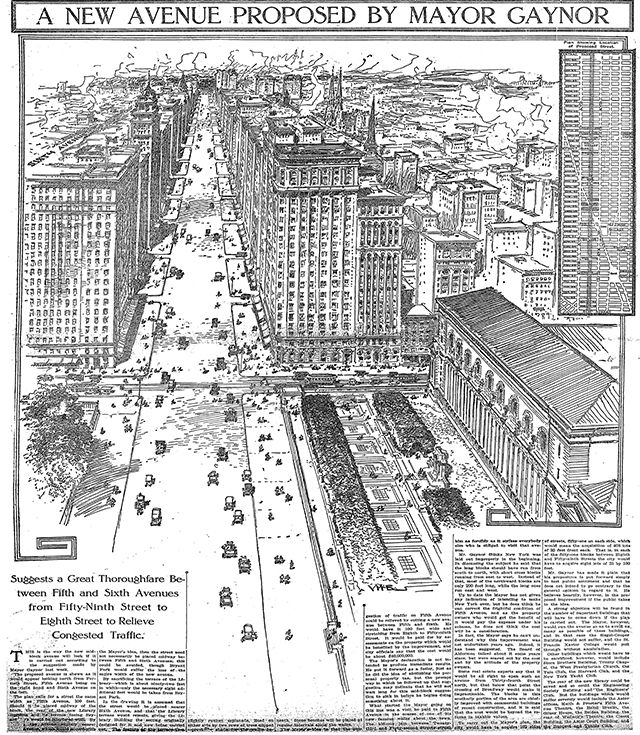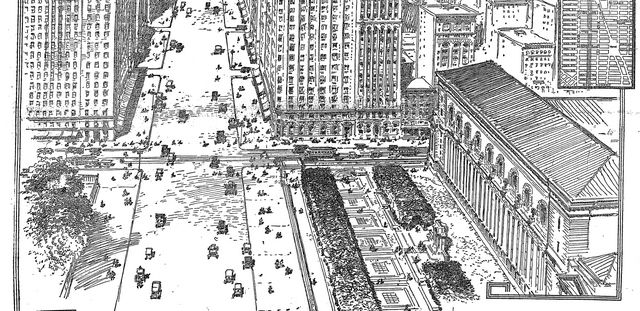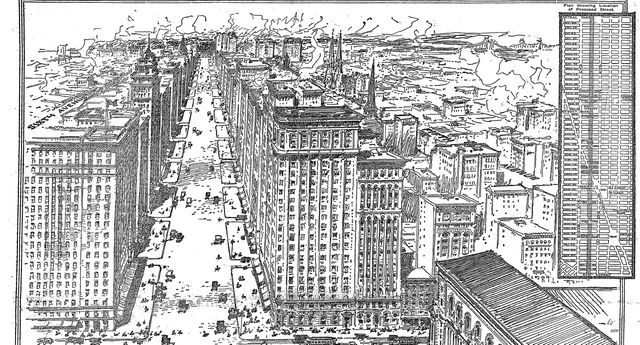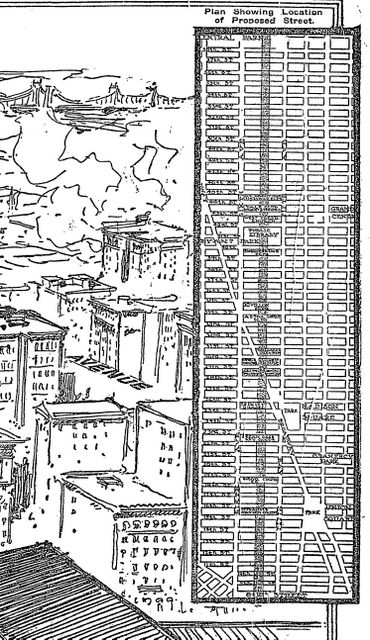Last Chance to Catch NYC's Holiday Notalgia Train
We met the voices of the NYC subway on our nostalgia ride this weekend!



In May of 1910, the ill-fated New York City mayor, William Jay Gaynor, proposed a new avenue to be added to Manhattan’s street grid that would go between Fifth and Sixth Avenue between 8th Street and 59th Street. While this might seem like a wild idea today, several new avenues were added to the original grid plotted by the Commissioners of New York City, like Lexington Avenue, Madison Avenue, and several thoroughfares uptown, like St. Nicholas Avenue. As a New York Times article reported on May 29th, 1910, the Gaynor’s avenue would be the same width as Fifth Avenue, then at 100 feet.

The Mayor believed that the New York City street grid system was “laid our improperly at the beginning,” believing that instead of long avenues, there should have been long north-south blocks. What you’re seeing in the image above is a view looking south, with the rear of the New York Public Library on the right (the building began construction in 1903 but would open in 1911).
The proposed avenue, a response to a a frequent traffic jam between 23rd and 42nd Street, would have bisected Bryant Park, though the article notes that the Mayor did not feel that the street be “necessarily placed midway between Fifth and Sixth Avenues.” The drawing above puts the avenue closer to the Sixth Avenue side in order to retain the library terrace. It had a predicted cost of $40 million in 1910 dollars.
The article continues with an opinion:
“The Mayor’s declaration is not intended to produce immediate results. He put it forward as a feeler, just as he did the idea of abolishing the personal property tax, but the prompt way in which he followed up that suggestions may indicate that he will not wait long for this mid-block suggestion to sink in before he begins doing something about it.”

Contemporary real estate experts were noted to have felt that the proposal was only realistic above 34th Street due to the new angle of Broadway. The plan, if it had been carried out, would have required the demolition of many buildings and the acquisition of 408 lots of land. Included in the buildings of concern that would have been demolished are the Astor Court Building, the Hotel Breslin, Keith & Proctor’s Fifth Avenue Theatre, the Belden Building, Wallack’s Theatre, the Cluett Building, and the Racquet and Tennis Club.

Ironically, many of these buildings would be demolished anyway. Astor Court came down with the original Waldorf Astoria Hotel to make room for the Empire State Building. The Racquet and Tennis Club, which was the club’s second location at 27 West 43rd Street before moving to Park Avenue, was replaced by an office building, as was Keith & Proctor’s Fifth Avenue Theatre. The Hotel Breslin remains, now the Ace Hotel as does the Cluett Building on 18th Street.
On a related note, Mayor Gaynor would be shot in the throat by just a few months later on August 9th, 1910 aboard a steamship en route to a European vacation. The culprit was a 58-year-old Irish municipal worker named John J. Gallagher, who had been fired from the city’s docks. Gaynor thought he would die and uttered the words “Tell the people goodbye for me.” But he survived, though the bullet would remain in his throat until his death, three years later aboard another steamship bound for Europe. He announced before leaving, “I am going to spend two weeks on the ocean where nobody can get at me.” Gallagher would be sentenced to twelve years in jail without a trial.
Next, check out the NYC That Never Was: 10 Outrageous Architectural Plans that Never Left the Drawing Board.
Subscribe to our newsletter